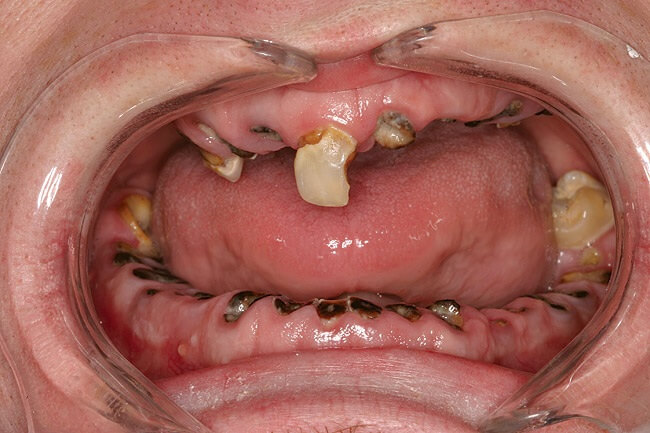The story of Jennifer Ashenfelter has become a chilling cautionary tale, a stark illustration of the destructive power of methamphetamine addiction. Beyond the legal troubles, the alleged drug manufacturing, and the accusations of child neglect, a new and deeply disturbing aspect of her struggle has come to light: the devastating reality of “meth mouth.”
Recent images of Jennifer Ashenfelter undergoing dental extractions due to severe tooth decay serve as a grim reminder of the physical toll methamphetamine takes on its users. This is not a distant, abstract concept; it’s a visible, tangible consequence of addiction, laid bare for all to see.
The Ravages of Meth Mouth: A Physical Manifestation of Addiction
“Meth mouth” is a widely recognized term describing the severe oral health problems associated with methamphetamine use. It’s characterized by rampant tooth decay, gum disease, and tooth loss. The images of Jennifer Ashenfelter’s decaying teeth and the subsequent extractions are a stark and unsettling depiction of this condition.
- Dry Mouth and Acid Erosion: Methamphetamine reduces saliva production, leading to dry mouth. Saliva plays a crucial role in neutralizing acids and remineralizing teeth. Without it, teeth become vulnerable to acid erosion from sugary drinks, poor oral hygiene, and the acidic nature of the drug itself.
- Teeth Grinding and Clenching: Methamphetamine use often leads to teeth grinding and clenching (bruxism), which can wear down enamel and damage teeth.
- Poor Oral Hygiene: Addiction often leads to neglect of personal hygiene, including oral care. This neglect, combined with the other factors, creates a perfect storm for tooth decay and gum disease.
- Nutritional Deficiencies: Methamphetamine suppresses appetite, leading to nutritional deficiencies that further weaken teeth and gums.
Jennifer Ashenfelter: A History of Addiction and Decline
Jennifer Ashenfelter’s journey into addiction has been well-documented. From her early struggles with substance abuse to her alleged involvement in a family meth manufacturing operation, her life has been consumed by the destructive power of drugs.
- Early Struggles: Her early life involved instability, which may have set the stage for later struggles with addiction.
- Escalating Abuse: Her addiction escalated to methamphetamine, a drug known for its rapid and devastating effects.
- Legal Troubles: Her addiction has been linked to legal troubles, including alleged prescription fraud, which led to the loss of her medical career.
- Family Implication: Allegations of her mother’s involvement in a meth manufacturing ring further highlight the profound impact of addiction on her family.
- Continued Use: Despite the visible consequences of “meth mouth,” reports and pictures suggest Jennifer Ashenfelter continues to use methamphetamine. This highlights the powerful grip that addiction can have, even in the face of severe physical deterioration.
A Cautionary Tale: Preventing Methamphetamine Use
Jennifer Ashenfelter’s experience serves as a powerful cautionary tale, illustrating the devastating consequences of methamphetamine addiction. It’s a stark reminder that “meth mouth” is not just a stereotype; it’s a real and debilitating condition.
- Raising Awareness: Sharing Jennifer Ashenfelter’s story can help raise awareness about the dangers of methamphetamine use.
- Educating Youth: Educating young people about the physical and psychological consequences of drug use is crucial in preventing addiction.
- Seeking Help: Encouraging individuals struggling with addiction to seek help is essential in breaking the cycle of abuse.
- Community Support: Providing community support and resources for individuals and families affected by addiction can make a significant difference.
Breaking the Cycle: Resources and Support
For those struggling with methamphetamine addiction, help is available:
- Substance Abuse and Mental Health Services Administration (SAMHSA): SAMHSA’s National Helpline provides referrals to local treatment facilities, support groups, and community-based organizations. You can reach them at 1-800-662-HELP (4357).
- National Institute on Drug Abuse (NIDA): NIDA provides information and resources on drug addiction and treatment. Visit their website at www.drugabuse.gov.
- Local Treatment Centers: Contact your local health department or search online for treatment centers in your area.
Jennifer Ashenfelter’s visible struggle with “meth mouth” is a stark reminder of the devastating consequences of addiction. By sharing her story, we can raise awareness, educate others, and encourage those struggling with addiction to seek help. We can also work to provide more community support to those that are caught in the grips of addiction.

Leave a Reply